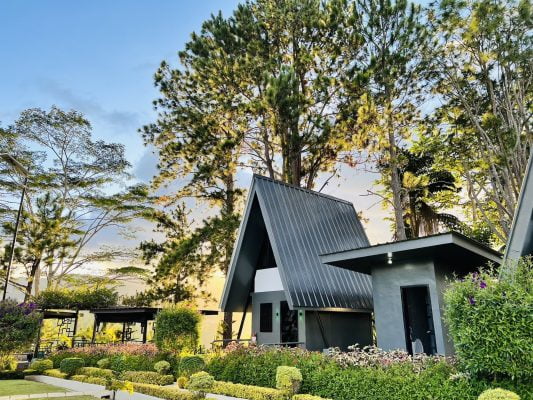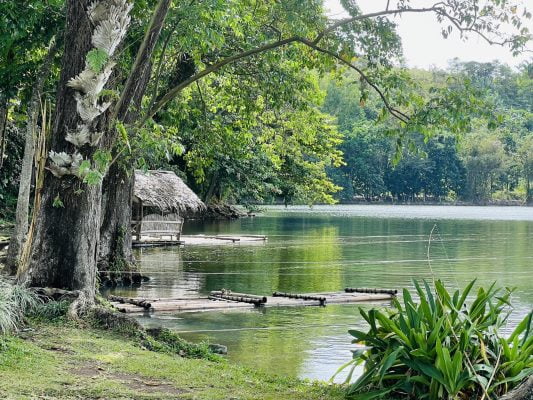
The urban qualities lent by northwestern neighbor Metro Manila blended by its own small-town ambience make Cavite a very charming place to visit. Major cities in the province boast of numerous shopping centers, hotels, restaurants and entertainment venues that cater to the needs of travelers. The smaller towns are home to varied attractions that can be reached by car, bus or jeepney.
Getting There and Getting Around

Taxis are plentiful at the airport and anywhere else in Metro Manila. If you’re riding one, make sure the meter is running and do not agree to a fixed rate as this can border on outrageous. Those who are looking for cheaper transportation can board a bus from Cubao, Quezon City bound for your city of choice in Cavite.
Most major roads in Cavite are dominated by jeepneys mostly traveling in fixed routes. Minimum fare for jeepneys cost P8.00 and increases with the distance. For shorter distances, you might want to ride a tricycle.
Tourist Attractions
The higher parts of Cavite are magnets for local tourists looking for an escape from the heat in Metro Manila. Tagaytay City is the main tourist hub. Aside from the cool weather and the fresh mountain breeze, Tagaytay is famous for the breathtaking views of Taal Lake and the Taal Volcano in its center.
Different activities can be done while in Tagaytay: sightseeing, horseback riding and food tasting are some of them. Those who are interested in riding horses can head to the Picnic Grove where there is also a great view of the lake during clear days. The place is also surrounded by many concessions offering local delicacies and souvenirs. Picnic Grove is overly crowded by locals during weekends so it’d be best to visit on a weekday.
There are plenty of high-class accommodations and resorts in Tagaytay so it is never too hard to find a nice place to stay. But there are also homey inns and cheap hotels that cater to budget travelers.
Cavite is also home to many majestic waterfalls. Two of the most visited falls are the Malibiclibic Falls and the Balite Falls. The latter is more tourist-friendly with waters well-suited for swimming, fishing and boating.
History and Romance

Being the country’s historical capital, Cavite is expectedly home to many historical sites, markers and museums that tell the stories of how the Filipinos fought for the freedom its people enjoy at present. One of the most interesting places is the Aguinaldo Shrine, the site of the declaration of Philippine Independence on June 12, 1898. The shrine was the home to the first president, General Emilio Aguinaldo. Now a museum, it houses antique home furnishings, a bowling alley, an indoor pool and secret passages used by the general during times of peril.
The Island of Corregidor is a perfect place to get in touch with Filipino history. It was one of the last bastions of the Filipino and American soldiers before falling into Japanese hands during the Second World War. It is most associated with General Douglas McArthur’s famous line, “I shall return”. The war structures, tunnels and cannons are still well-preserved in the island and can be viewed by tourists year round.
Other historic sites in the province include the Bonifacio Shrine in General Trias, Fort San Felipe and the Kawit Church, which was once connected to the Aguinaldo Shrine by an underground tunnel. The tunnel served as passage to escape used by Filipino revolutionaries during the Spanish occupation.
Local Specialties
Cavite is famous for its fresh seafood specialties and you must never exit the province without having a bite or two. One specialty is the raw oysters in vinegar and spices, locally known as kinilaw na talaba. This might sound unappealing for some but the taste is quite good; the vinegar and spices offsets the sometimes fishy taste of raw oysters. Another one is the ginataang tulingan (a kind of fish cooked in coconut milk) which is offered in most eateries throughout the province. The soup dish is best eaten with rice. When in Tagaytay, you must not miss the rellenong bangus (stuffed milk fish).
Cavite is a pretty safe place to visit but visitors are advised to exercise the usual level of discretion and common sense especially in crowded places. There are law enforcers and tourist police officers in most touristy areas so there’s really no need to worry about safety and security. The people of Cavite are warm and most of them speak Tagalog, English or a combination of both. Just approach a local for directions or for other information and you would instantly gain a new friend.
There is a reason why thousands of tourists come to Cavite every year. It’s not just the views of Tagaytay or the history of the province; it is the genuine beauty of the people that lures visitors in. Come visit Cavite and experience it for yourself!






